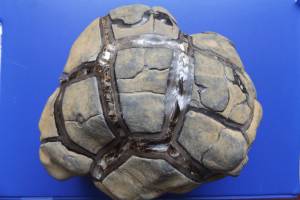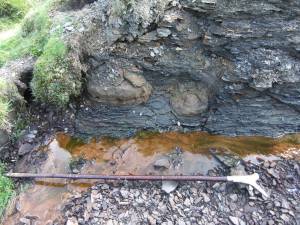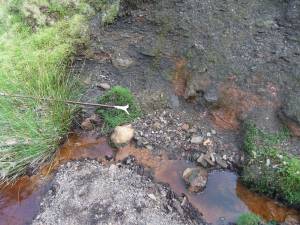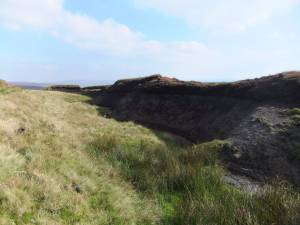|
| *****SWAAG_ID***** | 894 |
| Date Entered | 16/09/2015 |
| Updated on | 16/09/2015 |
| Recorded by | Tim Laurie |
| Category | Geological Record |
| Record Type | Geological HER |
| Site Access | Public Access Land |
| Location | Cogill Head Hags, below Lovely Seat |
| Civil Parish | Muker |
| Brit. National Grid | SD 88675 95012 |
| Altitude | 618m |
| Geology | Namurian. Base of marine shale below Ladgill Limestone exposed in side of peat gutter. Reference: British Geological Survey, Sheet 40. |
| Record Name | Lovely Seat. Cogill Head Hags. Calcareous concretions at base of marine shale bed. |
| Record Description | The concretions described below were photographed by Tim Laurie during a lone walk across Lovely Seat to Lover Gill Head through Cogill Head Hags. The concretion was one of several seen stratified at the base of an exposure of black shales of Namurian Age at the side of a peat gutter. The shales are probably stratified below the Ladgill Limestone, which is not exposed.
The following detailed description of the concretion, shown in the photographs below, which had weathered from the seam of similar concretions insitu within the shales above the stream bed, has been provided by John Russell:
'The rock (concretion) is very heavy and rust red in colour. These two facts suggest a high iron content. The cracks (in the concretion) are filled with sparry calcite. This type of rock has been described as having a septarian structure. They are believed to have formed during the early stage of the burial of a sediment. They often contain plant or animal remains that influence the biochemical reactions within the sediment.
The rock has an oval or discoidal shape and so it is referred to as a concretion. Irregular shaped bodies like the flints of Flamborough Head are referred to as nodules.
The rock is made of very fine clay minerals. A variety of different minerals can cement the clay particles together e.g. calcite, limonite, siderite, pyrite and silica. At Whitby in the Lower Lias Shales, the concretions can be shown to form just after deposition as the shales drape themselves round the concretion.'
The cracks filled with calcite have caused geologists problems. There are two theories to account for them. The first is syneresis. These are cracks that can occur underwater when the layer contracts-a bit like mud cracks caused by subaerial dessication. Or they may be due to pore fluid pressure during compaction.' |
| Dimensions | See photos |
| Image 1 ID | 6464 Click image to enlarge |
| Image 1 Description | The concretion |  |
| Image 2 ID | 6463 Click image to enlarge |
| Image 2 Description | Detail of concretion in situ at base of shales exposed in the side of the Gutter |  |
| Image 3 ID | 6460 Click image to enlarge |
| Image 3 Description | Base of shale bed with concretions in situ and fallen on to bed of stream |  |
| Image 4 ID | 6462 Click image to enlarge |
| Image 4 Description | Concretion fallen from shale to bed of stream |  |
| Image 5 ID | 6459 Click image to enlarge |
| Image 5 Description | Peat gutter at Cogill Head Hags |  |




